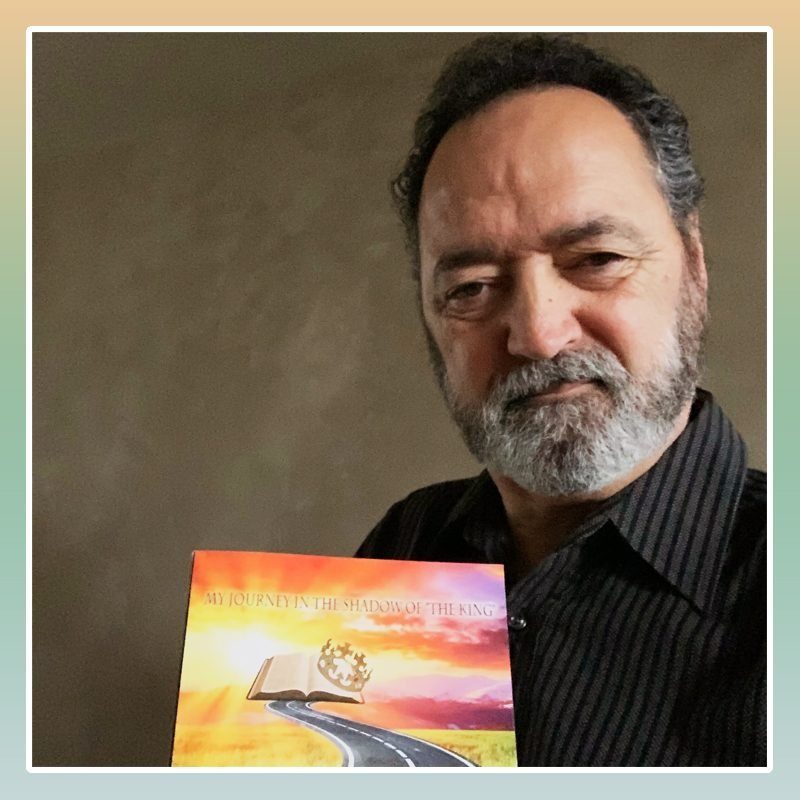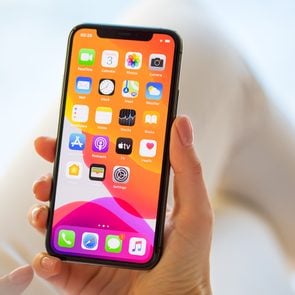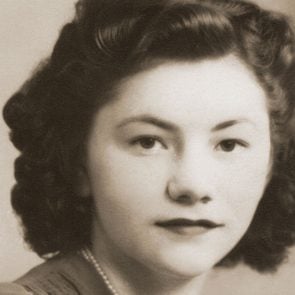When most people think about a heart attack, they picture quick, intense chest pain and sudden shortness of breath. But as many as one in five people who have a heart attack have mild, if any, symptoms. This is known as a “silent” heart attack and it’s more common in men than women.
The consequences can be dire: People who have a silent heart attack are less likely to get treatment because they don’t realize they’re experiencing one. This puts them at a much greater risk of dying from coronary artery disease than people who have a classic heart attack and seek treatment immediately.
The day that Danny Vann, 67, started to experience extreme fatigue while at work, he chalked it up to being out of shape. Turns out, he was having a heart attack—an experience that set him on a long journey to recovery and newfound purpose. This is his story.

A long family history of heart disease
My family’s history with cardiovascular disease has been a long and tragic one. My grandma had multiple strokes. My Uncle Bert was walking down the street one day when he keeled over—a classic heart attack at just 42 years old. Similarly, my Uncle Don went to bed one night and never woke up. Then there was my Dad, who had a quadruple bypass at age 62. Five years later, he was cooling off in the house after trimming a tree in his backyard when he realized he left the ladder outside. He went out to retrieve it and never came back.
Needless to say, when my cholesterol levels started to creep up in my late 30s I knew it was something I needed to take seriously. In 1998, when I was 45, I had an angina—chest pain due to decreased blood flow to the heart—and my wife called 911. It wasn’t a heart attack, but the doctors did discover some blockages and they performed double bypass surgery. (Here’s how to know when high blood pressure is an emergency.)
Prioritizing my health
After that first surgery, I started experimenting with all sorts of holistic solutions to keep my cholesterol under control. I took red rice yeast extract, ate grapefruit, and adopted a vegetarian diet for a while. The diet changes definitely prolonged my life, but the other things—not so much. No matter what I did, if I went off my meds my cholesterol would shoot up over 300 milligrams per deciliter (mg/dL). A normal range of total cholesterol levels should be less than 200 mg/dL. (These are the worst foods for cholesterol.)
Nonetheless, I can confidently say that besides my cholesterol, I was in great shape during those years. I was balancing a full-time job in corporate America and performing as an Elvis impersonator on the side. I would work 50 to 60 hours a week and then travel across the country and to Canada to do 40 to 60 shows a year.
As you can imagine, I got a physical workout every time I was onstage, singing and doing the dance moves. I was in better shape than most people my age. I was never in perfect health because of my heart, but no one could believe what I was doing at my age.
Exhaustion, fatigue, and powerless
By 2013, I was 58 and semi-retired from entertaining, but I agreed to do a show. Doing Elvis at that age would be hard for anyone, plus I’d let myself get a little out of shape. I really struggled to get through some of the songs, and by the end of the concert, I was more exhausted than ever. I didn’t think anything of it, assuming it was just that I had let myself get out of shape.
A few weeks later, I went to work and was feeling really groggy. I also had a very sharp pain in my back under my left shoulder blade. I assumed that was the result of a chiropractic adjustment I’d had a couple of days before.
I called my wife and told her I didn’t feel right and she urged me to come home. But I had a big presentation that afternoon—I was the lead project manager for a multimillion-dollar project—that I couldn’t miss.
I went down to my car and took a 20-minute power nap. Afterward, I felt a little better so I returned to do the presentation. About 10 minutes in, I felt all the energy drain out of me again and I knew it wasn’t good. I reached a point in the presentation when I could let my second-in-command take over, called my wife to tell her I was on my way, and I headed home. (Learn about the 50+ health symptoms you should never ignore.)
Reluctantly seeking urgent care
When I walked in the door, my wife took one look at me and said, “You need to go to the ER right now.” I dismissed her, saying I just needed to take a nap and I would be fine. But she knew something wasn’t right, so she called my mom for back up.
“What’s the big deal? Just go get checked out,” my mom urged. Still, I pushed back. Then they called my sister, who was studying to be a nurse at the time. “Look Dan,” she said. “This doesn’t make sense. You could have been at Urgent Care or at the ER by now.”
I still thought I’d be fine if I could just lie down for a bit. But if only to silence them, I agreed to let my wife drive me to Urgent Care.

Proof of a heart attack
At the clinic, things finally got real for me. After doing some bloodwork, they told me they were calling an ambulance to take me to the ER because it looked like I was having a heart attack. They gave me four baby aspirins, loaded me into the ambulance, and off I went.
In the ER, they ran more tests. After about three hours, they came back and confirmed that I had been having a heart attack, saying it was a good thing I had come in when I did. They scheduled me for an immediate heart catheterization—a procedure to open up clogged arteries—and put a stent in that day.
Afterward, the cardiologist explained to me that because I was essentially having a heart attack for a few hours, I’d lost about 30 percent of my heart’s ability to pump blood. One of my arteries—the one that’s known as the widow maker and one that I’d had replaced in my bypass surgery 15 years earlier—had totally collapsed. Plus, I was in the advanced stages of atherosclerosis.
If I’d taken a nap, like I wanted to, I likely never would have woken up.
“No more singing, no more work,” my doctor told me. I tried to reason with him, but he wasn’t messing around. “If you go back to work, you will die,” he said. “Your arteries won’t be able to handle it.” (These heart tests might just save your life.)
Focusing on cardiac rehabilitation
With no work and no performing, I threw myself into rehab. I went to all the sessions and took all the training they offered. But I wasn’t out of the woods yet.
Six months after my heart attack, I was out on a very slow walk when I went into AFib (short, for atrial fibrillation). AFib is an irregular heartbeat that can lead to blood clots, stroke, and other heart-related complications. I ended up having another heart catheterization (one of eight over the next two years) and another stent placed.
Two and a half years after the heart attack I was back to only around 50 percent of my previous energy levels. But I didn’t give up. I had seen what happened to my uncles and my dad and I knew I wanted to spend time with my grandkids someday—that was my motivation.
I followed doctors’ orders across the board. Not only did I make all the diet changes they recommended, but I bought a treadmill so I could stick to my walking exercise in the winter. In rehab, I learned that in order for exercise to really help my cardiovascular system, I needed to get my heart rate 20 to 30 beats higher than my resting heart rate. I would need to sustain that for at least 20 to 30 minutes. So I also bought a monitor and logged all my numbers. (Here are 9 walking mistakes you didn’t know you were making.)
My self-healing heart
At a more recent appointment with my cardiologist, he made a discovery that left him flabbergasted. Since I was pushing myself so hard and sticking to my exercise program so religiously, my heart had actually started growing new bypasses!
My atherosclerosis was still bad and we knew that one of the older replacement arteries was deteriorating. When it finally failed, I hardly noticed it—the new arteries just took over. And not only that, my doctor said that it seemed like my heart was repairing some of the damage that had been caused by my heart attack. (This is the scientific reason winter is prime heart attack season.)
Finding new purpose
If I’d taken a nap that day, I could have been just another statistic like my dad and my uncles. Instead, I recently passed the age that my dad lived to—and I don’t plan on going anywhere any time soon. I’ve even found a new passion and a way to give back.
During my hours spent on the couch as I was recovering from my heart attack, I wrote a book about my life, My Journey in the Shadow of “The King.” It’s about how the church and Elvis shaped my life and helped me find purpose. As a former foster kid, I’ve been sharing it with current and former foster kids to show them that they have the support they need and can be the people they want to be.
—As told to Alyssa Sybertz
Next, here are 50 heart health tips from cardiologists.
Did you know that you can read, compose, archive, and manage your Gmail on your computer without ever touching a mouse? With a few simple keystrokes, you can give Gmail the same commands you would with a mouse. For example, if you want to reply to an email, instead of having to find your cursor, then move your mouse to get the cursor to the upper-right corner of the screen, and then point and click on “reply,” you can simply type the letter “R.” You never need to lift your fingers off the keyboard or change your visual focus. And that’s just one of the many Gmail shortcuts you’ll end up using all the time.
This sort of accessibility is particularly helpful for some people who have mobility or vision impairments, as well as for those who are prone to repetitive stress injuries caused by mousing. Keyboard shortcuts also shave one or two seconds off dozens of frequent Gmail tasks. That might not seem like a lot, but it adds up. By one estimate, you save 64 hours per year if you use keyboard shortcuts at a full-time desk job. (Check out this definitive list of what those F1-F12 keys do.)
Enabling shortcuts
A handful of Gmail keyboard shortcuts are always available, but most of them need to be turned on first. Here’s how to do that: With Gmail open, click on Settings (it’s that little gear-shaped icon at the upper right of your screen), then “See All Settings.” When you’re brought to the next screen, go to the menu bar at the top and click “Advanced.” Scroll down to “Custom Keyboard Shortcuts” and click “Enable.” Then click “Save Changes” at the bottom. This will turn on most formatting shortcuts, as well as a handful of navigational time-savers.
But many, many more shortcuts are available. When you have Gmail open, type a question mark. This opens a window with a complete list of available shortcuts, including those that still need to be turned on, which is as simple as clicking “Enable.” This window also serves as a handy cheat sheet when you can’t remember a specific shortcut.
Some shortcuts use the Command/⌘ (Mac/iOS) or Ctrl (Windows/Android) keys. When keys need to be pressed simultaneously, a plus sign (+) is shown. Commands are shown here using capital letters, but shortcuts are not case-sensitive.
Shortcuts that are always on
To use the following keyboard shortcuts, select a message or conversation on Gmail, either by ticking it with your mouse or using the up/down arrow keys until the thin blue line on the edge of your inbox is aligned with the target message. Then press the following keys to achieve the desired actions. If these don’t seem to be working for you, press ? (Shift + /) to pull up the entire list of shortcuts and see which ones still need to be enabled on your computer.
| COMMAND | ACTION |
| O or Enter | Open conversation |
| Shift + I | Mark as read |
| Shift + U | Mark as unread |
| Z | Undo last action |
| E | Archive |
| ] or [ | Archive conversation and go to previous/next |
| J | Move to previous/older email |
| K | Move to next/newer email |
| U | Refresh email (or return to inbox from an open message) |
| ⌘/Ctrl + Enter | Send |
| ⌘/Ctrl + K | Insert link |
| ⌘/Ctrl + Shift+7 | Insert numbered list |
| ⌘/Ctrl + Shift+8 | Insert bullet points |
| ⌘/Ctrl + B | Bold |
| ⌘/Ctrl + I | Italicize |
| ⌘/Ctrl + U | Underline |
| Use arrow keys | Move up/down/left/right |
All other shortcuts will require enabling, as described above.
Shortcuts for common email actions
No more scrolling to the top or bottom of an email thread and then clicking on a drop-down menu to find the most appropriate action. From the main Gmail screen, you can simply type the key indicated. Don’t worry—your typing won’t show up in any messages.
| COMMAND | ACTION |
| C | Compose new email |
| Shift + C | Compose in new window |
| D | Compose in new tab |
| R | Reply |
| A | Reply to all |
| F | Forward |
| # (Shift + 3) | Delete |
| E | Archive |
| ! | Report as spam |
| / | Move cursor to search box |
You’ll want to make good use of that delete shortcut when you get a load of spam emails. (Here are the alarming things hackers can do when they have your email address.)
Shortcuts for email selection
Sometimes it’s helpful to find all mail with a certain status. Use these shortcuts to make bulk actions quicker.
| COMMAND | ACTION |
| Use arrow keys to move thin blue line next to the target email, then type X | Select a single email |
| * (shift + 8) + A | Select all mail |
| * + N | Deselect all mail |
| * + U | Select all unread mail |
| * + R | Select all read mail |
| * + S | Select all starred mail |
| * + T | Select all unstarred mail |
(Learn how to delete 99 percent of your digital footprint.)
Shortcuts for navigation
If you find yourself frequently navigating between different folders in your inbox, use these keyboard commands.
| COMMAND | ACTION |
| G + A | Go to all mail |
| G + I | Go to primary inbox |
| G + S | Go to starred messages |
| G + D | Go to drafts |
| G + T | Go to sent mail |
| G + C | Go to contacts list |
| G + K | Go to tasks |
(Here are 10 tricks to make your computer run faster.)
Shortcuts in conversation view
If you work in conversation view, you’ll appreciate the following shortcuts.
| COMMAND | ACTION |
| N | Move to next message in conversation |
| P | Move to previous message in conversation |
| ; | Expand entire conversation |
| : | Collapse entire conversation |
| M | Mute conversation |
| Shift + N | Update conversation |
(Discover the history behind keyboard letters.)
Customize keyboard shortcuts
Just because Google decided on certain keystrokes to represent certain actions, that doesn’t mean you have to keep them that way. If you’d rather use, say, the $ symbol instead of the / for search, you only need to make a small change in your preferences. From the main Gmail window, go to Settings and choose “Keyboard Shortcuts” from the top menu. (This menu item will only appear if you’ve already enabled keyboard shortcuts.) Then simply delete the key that’s currently mapped to the action in question and type in the key(s) you’d rather use. Then click “Save Changes” and you’re done!
Sources:
- LifeHack: “How Not Using Keyboard Shortcuts Makes You Lose 64 Hours Every Year”
- Gmail Help: “Keyboard shortcuts for Gmail”
Next, check out this Windows cheatsheet for PC keyboard shortcuts.
In the fall of 1968, I returned home from teaching Grades 1 through 3 in Newfoundland—under the Mennonite Central Committee—to teach Grades 1 and 2 in southern Manitoba.
I felt the best way for my Prairie students to improve their awareness of life and culture on Newfoundland’s northern peninsula was to become pen pals with the students there. One way for the children to experience different cultures at the time was through writing, where asking questions could satisfy their curiosity. For students to have someone other than their teacher read their letters was a great incentive to write. The whole class in my Prairie school classroom had the opportunity to have a pen pal from northern Newfoundland.
To set the stage, I introduced them to their pen pals using pictures and interesting anecdotes, such as the boy who came to school by boat because his parents were in charge of the lighthouse, or the little girls playing a circle game chanting, “A Tisket, a Tasket, A Green and Yellow Basket.” There were tales of lobsters cooking on the wood stove for the evening meals, baby seals crying on the ice floes in spring, and how on clear days one could see the Labrador coast eight miles across the Strait of Belle Isle. They saw pictures of icebergs dotting the strait in spring and into early summer. Although most of my students were interested in the lives and surroundings of these Newfoundland children, the writing lasted only a short while, except for Eleanor, a Grade 2 student from the Prairies, and Lois, a Grade 3 student from northern Newfoundland, who unbeknownst to me, kept their correspondence going.
Eleanor and Lois wrote to each other from the ages of seven and eight respectively and kept in touch for almost two decades before losing contact for a time. In 2003, I received an email from Lois, telling me that she had found Eleanor on Facebook and that they had reconnected.
“Yes, it was amazing that I was to find Eleanor again,” wrote Lois.
“I had thought of her many times over the years. We did write for many years, but I lost contact with her at about the time she was getting married. I remember thinking how far that was from what I was doing at that point in my life, but then, don’t we all come full circle?”
How two little girls of seven and eight came to grips with each other’s distinctive cultures was amazing because the settings could not have been more diverse. One, where the salty sea breeze blew off the Strait of Belle Isle and the lighthouse beamed its rays through the fog, and the other, where grain elevators stood as sentinels and dairy and grain farms marked the landscape.
In reminiscing, Eleanor remembered that it had been exciting to find a letter in the mailbox with her name on it. Later on in their communication, they both echoed the sentiment that they had things in common, including Christian faith, values and the love of writing. They shared stories of family experiences, dreams, children and professions. They were determined to keep in touch despite the 4,737 kilometres, diverse topography, different cuisine and traditions that separated them.
Although they have not met in person, Eleanor and Lois are still in touch via e-mail. Lois now lives in St. John’s, while Eleanor lives in rural Manitoba.
Next, read one Ontario woman’s heartwarming reflections on a lifelong romance.
With salons and barbershops across much of the country shuttered in response to the COVID-19 pandemic, chances are, you’re feeling a bit, well… Shaggy. Before you take matters into your own hands, however, spare a thought for your hairstylist—the only person who’s as concerned about your ’do as you.
Toronto barber and hairstylist Andrew Jandu warns that do-it-yourself haircare—from cuts to colour—is inherently risky.
“You can watch a YouTube tutorial on trimming your hair that makes it look really easy, but a lot of the techniques involved are very complicated,” Jandu says. What proves particularly tricky for men, according to Jandu, is achieving even results at the crown, where the length of the hair on top of the head should blend into the length at the back. Given the complexity of the job—and the average Canadian’s lack of experience with clippers—it’s increasingly likely he’s going to be dealing with some DIY disasters when the lockdown is lifted.
Similarly, clients who are accustomed to professional hair colouring may now be considering box colour as a quick fix for greys. Jandu’s advice? Don’t do it.
“Box dye is going to set you back with your hair colour goals,” he says, noting that every client he’s had who has taken the box colour route ends up regretting it, even as a short-term solution for roots that are growing out. “It’s really challenging to match your hair colour exactly with box dye, so if you’re attempting to blend out roots, you’ll probably end up with very clear banding,” Jandu says. Even worse, the box colour could end up interfering with your next professional colouring. “If you decide you want to go lighter in the future, you may have to wait until the box dye is fully grown out of your hair, or you may need a professional colour correction.” (Here’s why self-quarantine is the perfect time to embrace grey hair.)
That said, there is still some basic grooming that men in particular can tackle with some degree of confidence. “You can keep your hair from looking shaggy just by trimming your hairline at the back of your neck and above your ears,” Jandu says. This quick clean-up requires nothing more than a comb, a helping pair of hands (you’ll want to enlist the aid of someone with whom you’re self-isolating) and a beard trimmer. If you don’t already own the latter, it’s a worthy investment, says Jandu. “Think of it as the money you would’ve spent on your next haircut,” he says. “It doesn’t have to be fancy, either—you can pick up a basic trimmer at the drugstore or on Amazon.”
Here’s how to trim the hairline at the back of the neck and above the ears:
Editor’s note: This video was filmed in “bubble” conditions.
What you’ll need:
- Comb
- Drugstore-quality beard trimmer
- The assistance of someone in your household
Step-by-step instructions:
- Begin directly above the ear, using only the outside edge of the beard trimmer to follow the contour of the ear.
- For a clean look, ensure there’s clearance between the hair and the ear.
- If you’re starting with longer hair, use the comb to sweep hair down before each application of the beard trimmer.
- Continue the trim line around the ear, pulling the earlobe down and forward as necessary. Use the full flat width of the trimmer to create a straight line down from the ear towards the nape of the neck.
- At the neck, focus on cleaning up stray hairs rather than shaving up into the hairline. “Keep it low,” advises Jandu. “Don’t worry about trying to create a straight line.”
“By the time you get back to work, your hair might be a little bit longer, but this way it won’t look sloppy,” explains Jandu. To tame those longer locks until your barber is back in business, he recommends styling it either back or to the side, using your normal styling products. “You may have to start using a brush and a blow dryer after showering,” he says. “They’ll help train the hair and hold it into position.”
Now that you’re armed with this advice on how to cut your own hair, check out 40 more things to do during the lockdown.



 What Is Smishing?" width="295" height="295" />
What Is Smishing?" width="295" height="295" />






